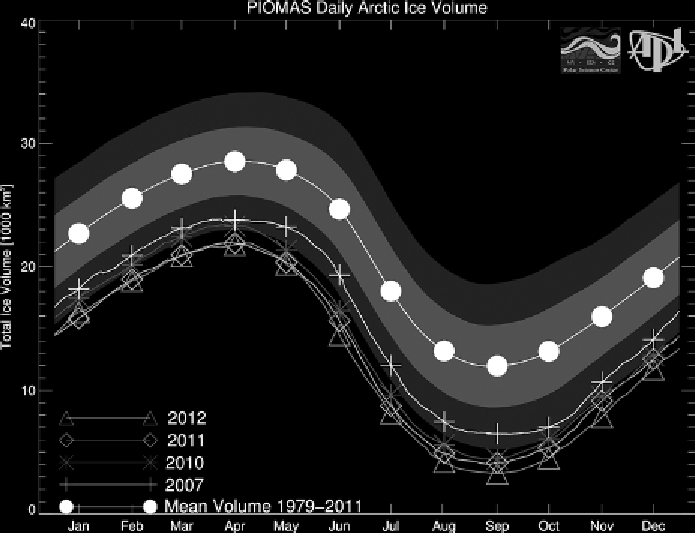Geoscience Reference
In-Depth Information
Figure 9.11.
Annual cycle of Arctic sea ice volume from PIOMAS for 2007, 2010,
2011, 2012, and for the long-term (1979-2011) mean. Shaded areas indicate one
and two standard deviations from the mean (courtesy of A. Schweiger, University of
Washington, Seattle WA). (See plate section for color version.)
projections and hindcasts (simulation of past conditions, such as over the twentieth
century) has been greatly facilitated by the Intergovernmental Panel on Climate
Change (IPCC) series of assessments. The Program for Climate Model Diagnosis
and Intercomparison (PCMDI) at the Lawrence Livermore National Laboratories
has the mission of developing methods and tools for the diagnosis and intercompar-
ison of output from GCMs contributed by modeling centers around the world. The
Coupled Model Intercomparison Project 3 (CMIP3) managed by PCMDI enabled
scientists to perform model analyses for the IPCC Fourth Assessment Report (AR4).
CMIP5 is the next phase and includes simulations for the Fifth Assessment Report,
AR5. It contains simulations to evaluate the veracity of model hindcasts, projections
for the near term (out to about 2035) and projections to the end of the twenty-first
century and beyond.
Although procedures for generating simulations have evolved through time and
details depend on the modeling center, one can broadly view the process as hav-
ing three steps: (1) one starts with a preindustrial simulation with climate forcings
(e.g., greenhouse gas concentrations, aerosol levels) set to a preindustrial state; (2)
starting from the pre-industrial state, the models are run with the best estimates of
historical climate forcings up through the present (hindcasts); and (3) the models

